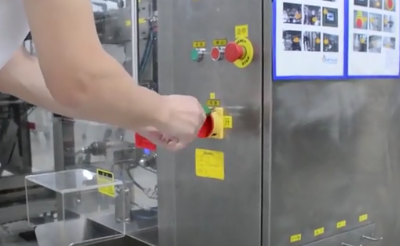6 Key Elements to a Successful Lockout Tagout Program
Year after year, lockout tagout compliance continues to appear on OSHA’s Top 10 Cited Standards list. The majority of those citations are due to a lack of proper lockout procedures, program documentation, periodic inspections or other procedural elements. Luckily, the following outlined key elements for a lockout tagout program will help you keep your workers safe and avoid becoming a statistic due to non-compliance.
1. Develop and Document a Lockout Tagout Program or Policy
The first step to lockout tagout success is developing and documenting your equipment energy control policy/program. A written lockout document establishes and explains the elements of your program.
It’s important to take into account not only OSHA’s guidelines, but also custom requirements for your employees to ensure they can understand and apply the program to their workday.
A program is not a one-time fix; it should be reviewed on an annual basis to ensure it’s still relevant and effectively protects employees. Creating a lockout program should be a collaborative effort from all levels of the organization.
2. Write Machine/Task Specific Lockout Tagout Procedures
Lockout procedures should be formally documented and clearly identify the equipment covered. The procedures should detail the specific steps necessary for shutting down, isolating, blocking and securing equipment to control hazardous energy, as well as steps for the placement, removal and transfer of lockout / tagout devices.
Going beyond compliance, we recommend creating best practice procedures that include machine-specific photos identifying energy isolation points. These should be posted at the point of use to provide employees with clear, visually intuitive instructions.
3. Identify and Mark Energy Isolation Points
Locate and identify all energy control points — valves, switches, breakers and plugs — with permanently placed and standardized labels or tags. Keep in mind that these labels and tags should be consistent with the equipment-specific procedures from Step 2.
4. Lockout Tagout Training and Periodic Inspection/Audits
Be sure to adequately train your employees, communicate processes and conduct periodic inspections to ensure your program is running effectively. Training should not only include OSHA requirements, but also your own specific program elements, such as your machine-specific procedures.
When OSHA evaluates a company’s lockout tagout compliance and performance, it looks for employee training in the following categories:
Authorized employees. Those who perform the lockout procedures on machinery and equipment for maintenance.
Affected employees. Those who do not perform lockout requirements, but use the machinery that is receiving maintenance.
Other employees. Any employee who does not use the machinery, but who is in the area where a piece of equipment is receiving maintenance.
5. Provide Proper Lockout Tagout Devices
With so many products on the market designed to help keep your employees safe, selecting the most appropriate solution for your application is the key to lockout effectiveness. Once selected, it’s important to document and use devices that best fit each lockout point.
6. Sustainability
Your lockout tagout program should always be continuously improving, which means it should include regularly scheduled reviews. By consistently reviewing your program, you are creating a safety culture that proactively addresses lockout tagout, allowing your company to focus on maintaining a world-class program. It also saves time because it prevents you from having to start from scratch each year and reacting only when something goes wrong.
Not sure if you can maintain the sustainability costs? Programs that lack sustainability tend to have higher costs in the long run, because the lockout tagout program must be recreated each year. By simply maintaining your program throughout the year, you’ll enhance your safety culture and use fewer resources because you won’t need to reinvent the wheel each time.
When looking at your program from this perspective, it’s clear that a sustainable program helps you stay one step ahead, while saving time and money.

Post time: Oct-15-2022

